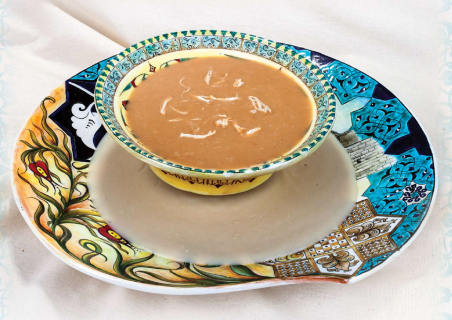Arabaşı Soup (Seljuk Type with Plum)
For more than 4 persons
Cooking Time: 30-40 minutes
For soup:
1 chicken or sheep neck
10 cups of water (to boil the chicken)
1 sweet spoon salt
2 tablespoon butter
2 tablespoon flour
1 cup of mountain plum peel
5 cups of chicken juice
For Dough:
5 cups of chicken juice
1 glass of flour
1 sweet spoon salt
Wet the plums from the evening. Boil it in the morning and drain.
Put chicken or neck meat on the fire with 10 cups of water. Add salt to the soft meat, cook until softened, drain the water, tease the brisket. If the water decreases, add boiling water for completing the water fto 10 cups.
Squeeze the oil, add the flour, lightly roast the sauce until getting yellow, add enough plum. (Set the sour according to your taste). Add one glass of cold chicken water and five glass of hot chicken water roux, take the roux to the light fire when it begins to boil with stirring, add the meat, close the cover, cook for 10 minutes.
Dough: Put 5 cups of chicken juice in a pot, put it on medium heat. Add the flour slowly by stirring with a spoon. Add salt. Stir very lightly on the fire and mix and pour on tray when it gets dark. When it freezes, cut it in diamond shape, open the middle with a knife enough to take the soup or sieve. Pour hot soup into a bowl or basin, place it in the middle of the dough in the tray and serve.
Irene Melinkoff writes that Halva nights were made in Seljuks in 13rd century. The halva nights which were seen in the Tulip Age and in the time of the Third Ahmet, continue in the capital Konya as continuation of the tradition coming from the Seljuks. In the past, peşmani or cannabis halva was made in Konya for night guests and sour arabaşı soup was served before halva. After arabaşı, the cannabis halva was prepared in advance and the peşmani was served by the male guests. In this soup which is made with tomato sauce today, Seljuks provided sourness with plum or coriander. This kind of plum arabaşı soup which is seen today in the Bozkir district of Konya, shows that the Seljuk tradition continues.

